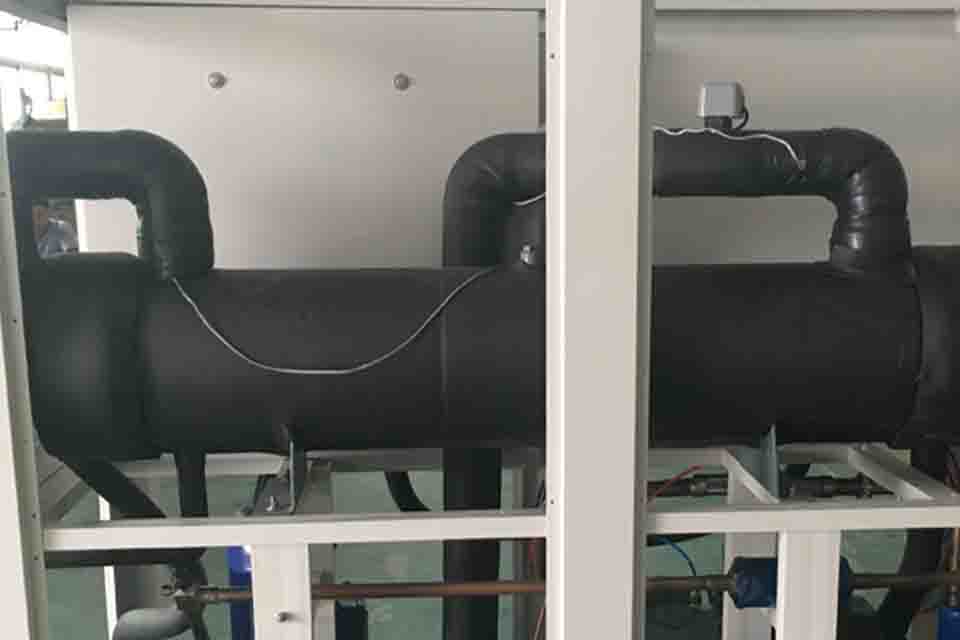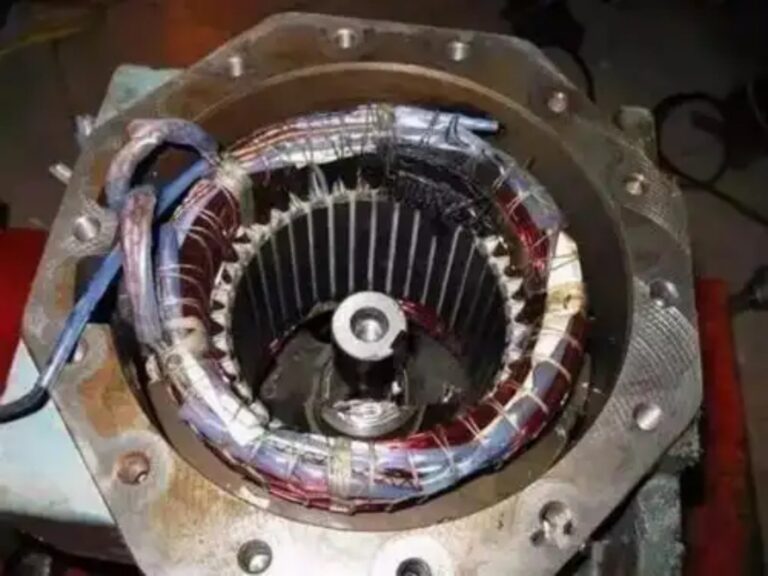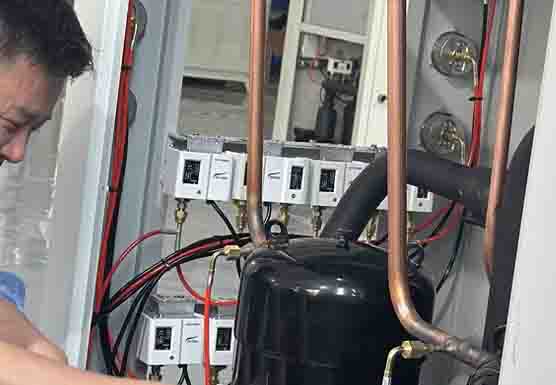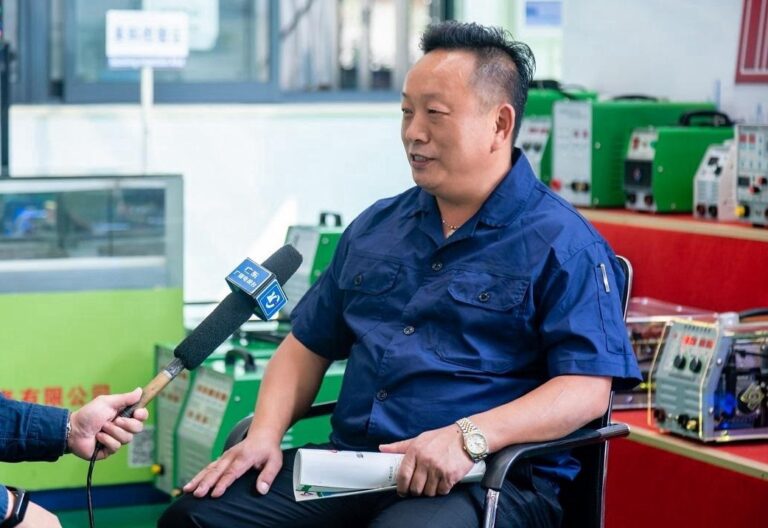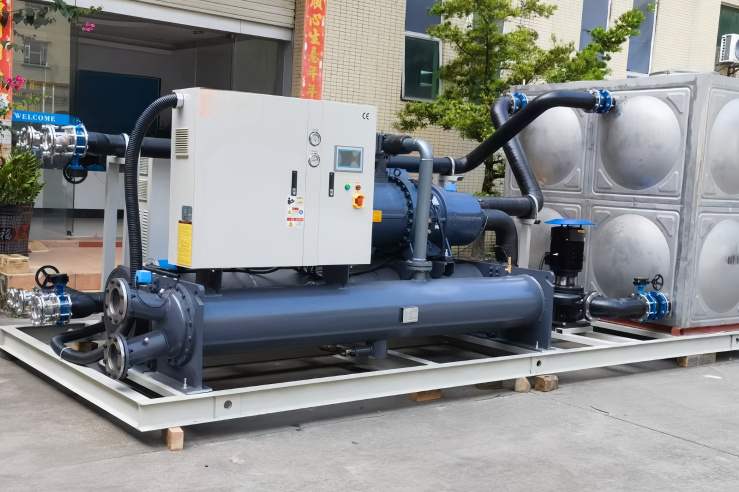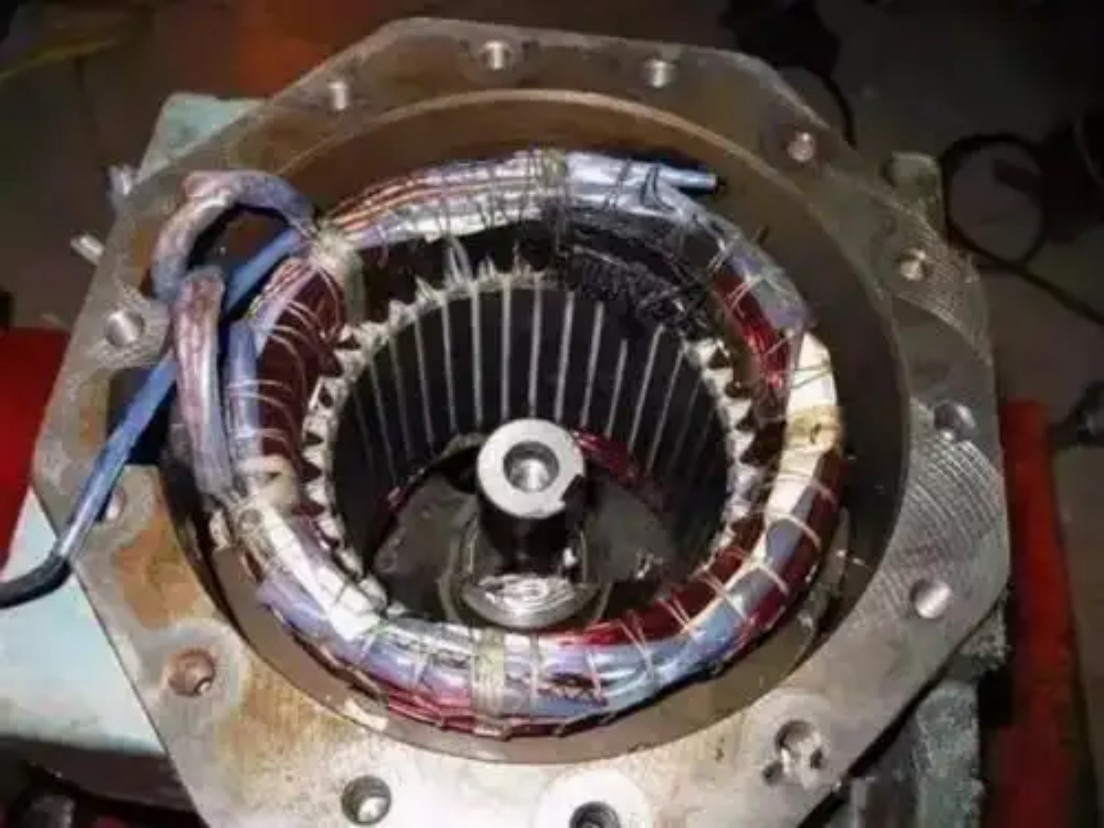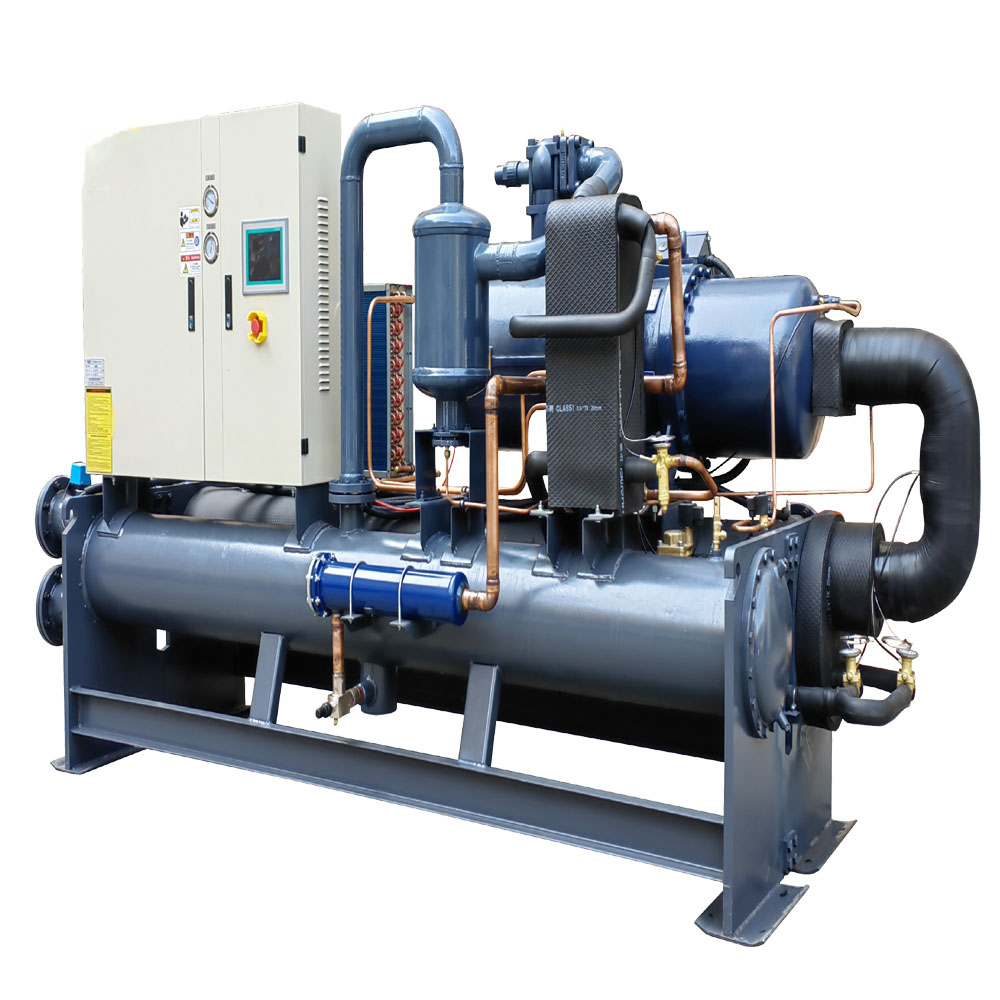-
広東省大陵山工業
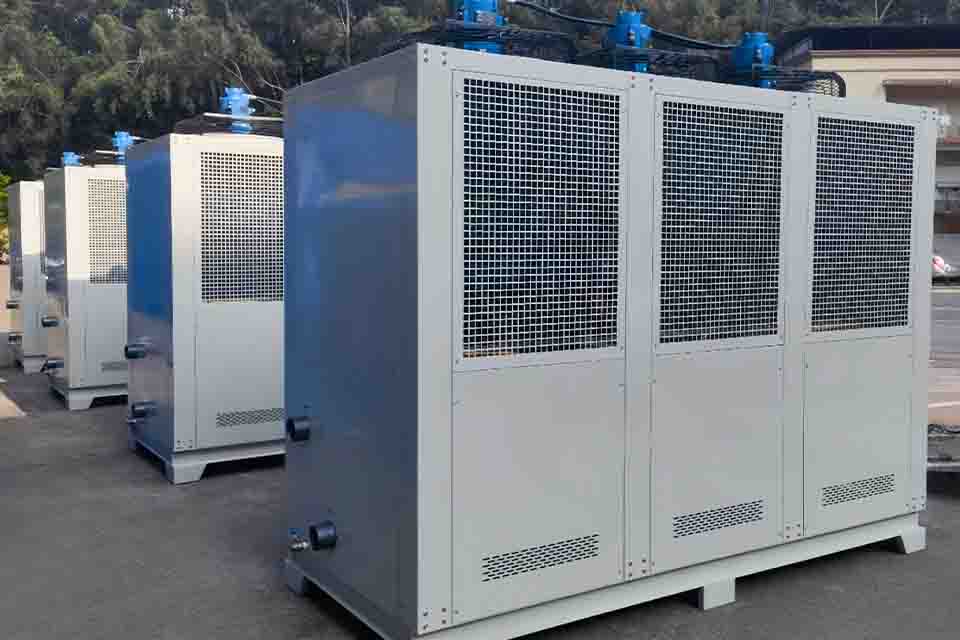
how do i choose my chiller
Choosing the Right Chiller: A Step-by-Step Guide for Your Application
この記事では、 select a chiller that perfectly fits your needs, focusing on industrial applications. It covers the critical factors you must consider to ensure optimal performance, efficiency, and longevity of your チラーシステム. Whether you’re in the Plastics and Rubber Industry, Machining Industry, or any other sector requiring precise temperature control, this guide is designed to help you make an informed decision, ultimately leading to cost savings and improved operational efficiency. This article is a worthwhile read because it breaks down complex technical details into simple, understandable language, ensuring that even those new to チラー can grasp the essential concepts and make the 最高のチラー choice for their specific requirements.
目次
産業用チラーとは何ですか? どのように機能しますか?
アン 産業用チラー は 冷蔵システム that removes heat from a liquid via a vapor-compression or absorption refrigeration cycle. This cooled liquid then circulates through a heat exchanger to cool equipment or another process stream (such as air or process water). As a necessary component, 冷凍 creates a continuous cycle of cooling and heat transfer.
In essence, a チラー functions by circulating a 冷却剤, typically water or a water/グリコール mixture, through a closed-loop system. The 冷却剤 absorbs heat from the process or equipment, which then flows to the チラー ここで 冷媒 内で チラー 熱を吸収します。 コンプレッサー その後、圧力と温度が上昇し、 冷媒, which then flows to the コンデンサー. Here, the heat is released, either to the ambient air in 空冷式チラー or to a separate water source in water-cooled systems. My experience has shown me that understanding this basic principle is crucial for anyone operating in an industrial setting.
Why is Selecting the Correctly Sized Chiller Crucial?
Selecting a correctly sized chiller is vital for maintaining optimal performance and efficiency in your operations. An 小型チラーは常に struggle to meet the cooling demands, leading to inadequate 冷却 and potential damage to your process equipment and the process itself. My personal experience emphasizes that this can result in costly downtime and reduced productivity. This leads to issues where the チラーは決して に properly cool the process equipment, leading to overheating and potential damage. Conversely, an oversized chiller will never operate at its peak efficiency, leading to higher energy consumption and unnecessary operational costs. Plus, the temperature will not be stable。 チラー might cool the process too quickly, leading to short cycling, where the チラー turns on and off frequently. This not only wastes energy but also puts extra wear and tear on the チラーの components, reducing its lifespan. The oversized chiller will never be able to run at its rated capacity. Also, the initial investment for an oversized unit is higher, and it may require more space around the chiller for proper ventilation and maintenance, adding to the overall cost and complexity.
In simple terms, one size does not fit all. Getting the correct chiller サイズ ensures that the system can handle the 冷房負荷 efficiently, maintaining the desired process water temperature and extending the lifespan of your equipment. An 小型チラー is like trying to cool a large room with a tiny fan – it simply won’t work efficiently. On the other hand, an 特大チラー is like using a massive air conditioner to cool a small closet – it’s overkill and wasteful. The 正しいサイズ 確実に チラー operates within its optimal range, providing efficient 冷却 without unnecessary strain.
What are the Main Types of Chillers?
Broadly speaking, チラー are categorized into two main types based on their heat rejection method: 空冷式 and water-cooled. 空冷式チラー use ambient air to dissipate heat, while 水冷式チラー 水を使用する 冷却塔 or other water source.
空冷式チラー は easy to install and require less maintenance than water-cooled systems. They are typically preferred in applications where water is scarce or where a simple, self-contained system is desired. 空冷式チラー are typically 使用済み when the heat from the チラー can be exhausted directly outside. However, they can be less efficient in 高い周囲温度. My firsthand experience confirms that these chillers are ideal for smaller setups. These チラー use fans to blow ambient air across a コンデンサー, which cools the 冷媒.
| 特徴 | 空冷式チラー | 水冷式チラー |
| インストール | Simpler, no need for a cooling tower | より複雑で、冷却塔や水源が必要 |
| メンテナンス | Lower, fewer components to maintain | Higher, requires regular cleaning of cooling tower |
| 効率 | Generally lower, especially in high ambient temperatures | Generally higher, more consistent performance |
| 空間 | Can be larger, requires clearance for airflow | Can be smaller, but requires space for cooling tower |
| Noise | Louder due to fans | Quieter operation |
| 水の使用 | No water consumption | 継続的な水の供給が必要 |
| 応用 | Suitable for smaller to medium cooling loads | Ideal for large cooling loads and high-heat environments |
| 料金 | Lower initial cost | Higher initial cost |
| エネルギー使用 | More in warm temperatures | Less, efficient cooling |
| Indoor/Outdoor | Outdoor | Indoor |
水冷式チラー もっと efficient than air-cooled units, especially in 高い周囲温度, because water is a more effective 熱伝達 medium than air. They require a separate 冷却 water source, which can be a 冷却塔, a well, or a municipal water supply. 水冷式チラー are generally more 効率的 because water has a higher heat capacity than air, meaning it can absorb more heat. These チラー circulate water through a コンデンサー, which absorbs the heat from the 冷媒. The heated water is then pumped to a 冷却塔 where the heat is dissipated. 水冷式チラー are ideal for large industrial applications where efficient 冷却 is critical and a reliable water source is available. While they require more maintenance, their energy efficiency often leads to lower operating costs in the long run. Additionally, they can be installed indoors, which protects them from weather elements and allows for easy inspection and maintenance. They are well-suited for large industrial applications where a reliable 冷却 source is available. From what I’ve seen, they are the go-to choice for large-scale operations. Also, 水冷式チラー are typically placed indoors, while 空冷式チラー are usually placed outdoors.
How to Determine the Cooling Load for Your Application?
決定する 冷房負荷 is a critical step in selecting the correct チラー サイズ。 冷房負荷 is the amount of heat that needs to be removed from the process or equipment to maintain the desired temperature. It’s usually measured in tons of refrigeration or BTUs per hour.
There are several methods to calculate the 冷房負荷, including using the flow rate and temperature difference (入口と出口 water) or by assessing the heat generated by the equipment itself. For instance, the formula to calculate the required チラー capacity based on water flow rate and temperature change is:
Cooling Load (BTU/hr) = Water Flow Rate (gallons/min) * 500 * (Inlet Water Temperature (°F) – Outlet Water Temperature (°F))
もし、 inlet water temperature is 65°F and the outlet water temperature is 55°F, and the rate of flow is 10 gallons per minute, then:
Cooling Load (BTU/hr) = 10 * 500 * (65 – 55) = 50,000 BTU/hr.
It’s crucial to consider all sources of heat generation within the process. In my experience, overlooking even minor heat sources can lead to an undersized system. When calculating 冷却 capacity, it is important to include a safety factor, typically around 20%, to account for variations in operating conditions and potential future expansion. This ensures that your チラー can handle unexpected increases in 冷却 demand without compromising performance. The goal is to help you make the best decision possible.
What Role Does Ambient Temperature Play in Chiller Selection?
アンビエント air temperature significantly impacts チラー性能, particularly for 空冷式 units. In regions with 高い周囲温度、 チラー‘s ability to dissipate heat is reduced, requiring a larger チラー 同じことを達成する 冷却 capacity.
For instance, a チラー operating in a location with an average 周囲温度 of 95°F will need to work harder than one operating at 75°F. This is because the 熱伝達 efficiency decreases as the temperature difference between the 冷媒 そして 周囲 air decreases. Therefore, it’s crucial to consider the maximum expected 周囲 temperature when selecting a chiller.
| Ambient Temperature (°F) | Chiller Capacity Reduction (%) |
| 75 | 0 |
| 85 | 5 |
| 95 | 10 |
| 105 | 15 |
| 115 | 20 |
In my experience, customers in hotter climates often require a larger チラー to compensate for the reduced efficiency. It’s essential to consult with チラーメーカー or experienced engineers to accurately account for 周囲 temperature variations. Remember, there may be other circumstances that affect your choice.
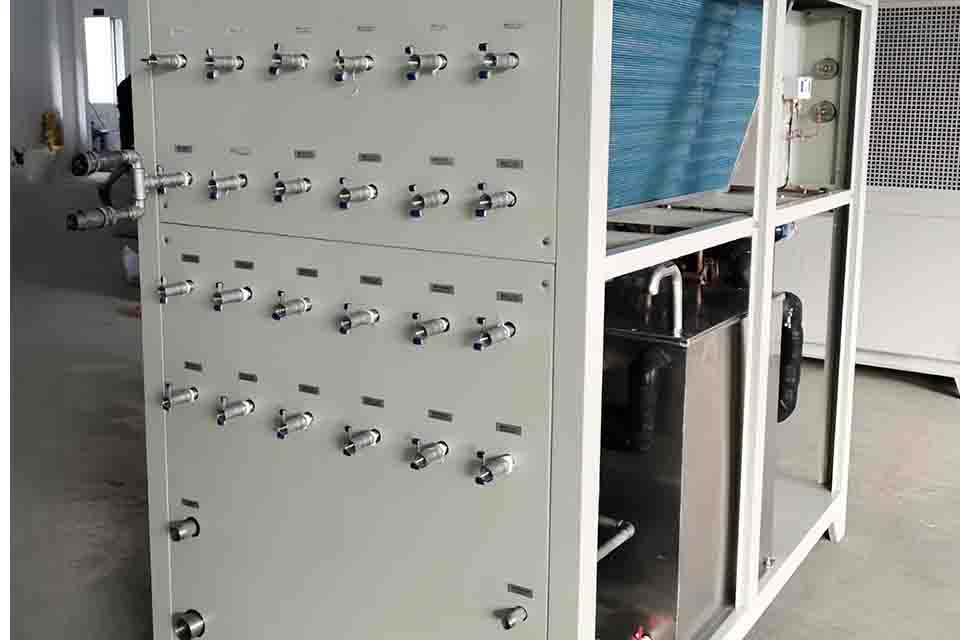
What is the Importance of Flow Rate and Pressure in a Chiller System?
の flow rate, or the 水の量 circulated through the チラー per unit of time, is another critical factor. It directly impacts the チラー‘s ability to 熱を取り除く from the process. The correct flow rate 確実に 水 spends enough time in the チラー to be cooled to the desired temperature.
の pressure the pump can deliver is also important, especially in systems with long hose runs or complex piping. Insufficient pressure can lead to reduced flow rates and inadequate 冷却. It’s essential to select a chiller with a pump that can deliver the required flow rate across the system at the necessary pressure. In my experience, neglecting flow rate and pressure considerations can lead to significant performance issues.
空冷式チラーと水冷式チラー:どちらが適していますか?
The choice between 空冷式 そして 水冷式チラー depends on various factors, including the application, the availability of water, the 周囲 temperature, and the desired efficiency.
空冷式チラー are generally simpler and have lower maintenance requirements, making them suitable for smaller applications or locations with limited water access. However, they are less 効率的 で 高い周囲温度. Water-cooled チラー offer higher efficiency and are preferred for larger industrial applications where 冷却 water is readily available. They are typically installed indoors and offer better performance in hot environments. I’ve often recommended 水冷式チラー to clients with high 冷却 loads and access to a reliable water source.
Here are some additional factors to consider when choosing between 空冷式 そして 水冷式チラー:
- Noise: Air-cooled チラー are typically noisier than 水冷式チラー because they use fans to dissipate heat. This can be a concern in noise-sensitive environments.
- 空間: 空冷式チラー require more space for ventilation than 水冷式チラー.
- 腐食: Water can be corrosive, which can shorten the lifespan of 水冷式チラー if not properly maintained. Therefore, it is essential to monitor the water quality and use appropriate 腐食 inhibitors.
How to Maintain and Troubleshoot Your Chiller?
Regular maintenance is crucial for ensuring the longevity and optimal performance of your チラー. This includes cleaning the コンデンサー コイル、チェック 冷媒 levels, inspecting the pump and piping for leaks, and monitoring the 水 quality. A used chiller requires even more attention.
Troubleshooting common issues, such as insufficient 冷却, unusual noises, or leaks, often involves checking the flow rate, 水温、 そして 冷媒 levels. In many cases, these issues can be resolved by adjusting settings, cleaning components, or adding 冷媒. However, it’s always recommended to consult with a qualified technician for complex problems. My experience has taught me that proactive maintenance can prevent most issues and significantly extend the チラーの寿命。
What are the Key Factors to Consider When Choosing a Chiller Manufacturer?
正しいものを選択する manufacturer is as important as choosing the 右チラー. Look for manufacturers with a proven track record, extensive experience in your industry, and a reputation for producing high-quality, reliable equipment.
Consider factors such as the manufacturer’s warranty, after-sales support, and the availability of spare parts. It’s also beneficial to choose a manufacturer that offers customization options to tailor the チラー to your specific needs. In my experience, working with a reputable manufacturer like us can make a significant difference in the overall performance and reliability of your チラーシステム.
Ready to Optimize Your Cooling System? Contact Us for Expert Guidance
選択する 右チラー is a critical decision that impacts your operational efficiency, productivity, and bottom line. At Industrial Water Chiller Manufacturing Plants for products, we understand the complexities involved in selecting and sizing 産業用チラー. With years of experience serving diverse industries, including Plastics and Rubber, Machining, 食品・飲料業界, Chemical and Pharmaceutical, Electronics, Laser, Printing, Medical, Laboratories and Research Institutions, and Data Centers, we have the expertise to guide you through every step of the process.
Our team of experienced engineers can help you determine the optimal チラー サイズ and type for your specific application, taking into account factors such as 冷房負荷, 周囲 temperature, flow rate, and pressure requirements. We offer a wide range of チラー、 含む 空冷式 and water-cooled units, with various 冷却能力 available to meet your unique needs.
We pride ourselves on providing personalized service and support, from initial consultation to installation and beyond. Our commitment to quality, reliability, and customer satisfaction sets us apart. We don’t just sell チラー; we provide comprehensive 冷却 お客様の特定のニーズに合わせたソリューション。
Whether you need a standard unit or a customized system, we have the expertise and resources to deliver the perfect チラー for your application. Our website offers detailed information on a wide array of products including 空冷式スクリューチラー, 農業用産業用チラー, 水冷式スクリューセントラルチラー, グリコールチラー, HVAC チラー, 水冷式スクリュー式水チラー, each designed to meet specific industrial needs. We’re here to help you make the best choice for your business. Let’s work together to optimize your 冷却システム and enhance your operational efficiency.
お問い合わせ today to discuss your 冷却 needs and discover how our expertise can benefit your operations.
よくある質問
空冷式チラーと水冷式チラーの違いは何ですか?
空冷式チラー use ambient air to remove heat, while water-cooled チラー use water. Water-cooled units are generally more efficient, especially in hot environments, but require a water source.
アプリケーションに適したサイズのチラーをどのように決定すればよいですか?
の 正しいサイズ によって異なります 冷房負荷, which can be calculated based on the flow rate and temperature difference or the heat generated by your equipment.
What is the importance of flow rate in a chiller system?
流量 determines how quickly the 水 冷却されます。 correct flow rate ensures the water spends enough time in the チラー to reach the desired temperature.
How does ambient temperature affect chiller performance?
高い 周囲 temperatures reduce the efficiency of 空冷式チラー, requiring a larger unit to achieve the same 冷却 capacity.
What maintenance is required for chillers?
Regular maintenance includes cleaning コンデンサー コイル、チェック 冷媒 levels, inspecting pumps and piping, and monitoring 水 品質。
Why should I choose Industrial Water Chiller Manufacturing plants for products as my chiller supplier?
We have extensive experience, offer customized solutions, and are committed to quality and customer satisfaction. We provide comprehensive support from selection to installation and beyond.
重要なポイント
- 選択する correct chiller size is crucial for optimal performance and efficiency.
- Cooling load, 周囲 temperature, flow rate, and pressure are critical factors to consider.
- 空冷式 そして 水冷式チラー have distinct advantages and disadvantages.
- Regular maintenance is essential for extending チラー lifespan and preventing issues.
- Choosing a reputable manufacturer like us ensures quality, reliability, and expert support.
- There may be other circumstances to think about before making a decision.
By understanding these key concepts and partnering with experienced professionals, you can confidently select the 右チラー for your application, ensuring efficient, reliable, and cost-effective 冷却 for years to come.
